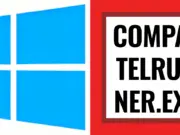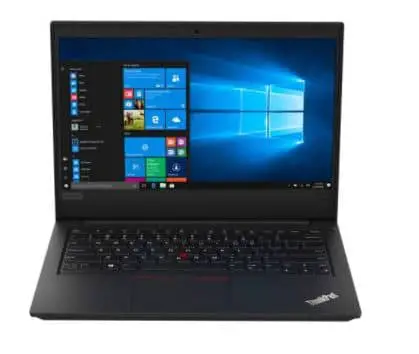If you’re serious about learning remotely, then it’s important to make sure you have the right tools. Whether you are teaching English as a second language or coding for your newest app, there are some things to keep in mind before purchasing a computer. This blog post will help walk through everything from hardware specifications and software requirements (such as screen sharing) to what operating system is best for remote work – Windows 10 or Mac OSX.
The importance of an HD Webcam
For a lot of folks, the webcam becomes a secondary consideration. However, it’s important to think about what hardware specifications you are looking for in your laptop. A webcam with a higher resolution can help make sure that the person on the other end of screen share is able to see more detail and clarity in your face – even when they’re far away from their computer.
The most common resolutions for built in webcams are 720p and 1080p and sometimes UHD aka 4k. 720 is usually the resolution that comes with most laptops, but we recommend checking before you buy to make sure your laptop has a higher resolution webcam at 1080p at the least.
Microphone – internal vs. external
So now you can see the person on the other end of the video and they can see you, but even the best online learning platforms won’t do you any good if the sound is off. This is where the microphone comes in. A lot of laptops come with built in microphones that do an okay job, but if you’re going to spend a considerable amount of time talking, we’d recommend planning for an external microphone.
Speakers – internal vs. external
A computer’s internal speakers system can be limiting, especially if you’re learning fulltime from your laptop. If the sound is coming out of its built-in speakers directly underneath it, you could have trouble hearing what’s going on during face to face sessions because the others on the call may also hear their own voice echoing back at themselves. A good solution for this would be external speakers that can either plug into an open USB port or work with Bluetooth so that there isn’t any interference when switching between audio sources.
The solution – external headset
The recommended solution for both microphone and speakers is to purchase an external headset. You have several options here including wired or bluetooth, earbuds or over ears, etc. For casual wear, cordless bluetooth headsets or earbuds can work, but if you’re planning on a lot of use we’d recommend going with a corded set.
This solution may seem costly at first glance, but remember that these devices will last for years if properly taken care of, which means this investment could quickly pay off for those looking into remote learning options.
Monitor – size and type
There are two major types of monitors: LED and LCD. You might not be able to tell the difference by just looking at them since both use liquid crystal displays (LCD). The main difference is how light travels through each monitor. When looking at your options, and comparing price, size, and brand name, it’s important to keep in mind what the monitor will be used for.
LED monitors are great when you want a huge screen with high refresh rates (measured by Hertz) so that your games and movies look better on bigger screens. LED monitors also have less pixel density per inch than LCD, which is why they’re usually more expensive purchases but offer sharper images if you’re looking at them from close up. They can handle glare well too – especially without backlight or ambient light sensor features turned on. This makes them good choices where there are windows or natural lighting nearby since they won’t get washed out as easily as other types of devices would while sitting next to a window during daytime hours.
LCD monitors are a good alternative when you are looking for an all-purpose monitor that can handle anything you throw at it. They’re good for gaming, video editing and other work due to their high refresh rates, low pixel density per inch (which is why they usually come with larger screens) and the fact that LCDs are more flexible overall when it comes to resolution – meaning you’ll have less issues switching resolutions or scaling content on an LCD screen than most LED monitors will. On the downside though, if your computer has a glossy finish then there’s always going to be some glare coming off of those panels which means they might not look as sharp in environments where light sources are present nearby – especially during daytime hours!
Laptop vs. Desktop
When you’re investing dollars, energy, and time on the best online learning platforms, you want your experience to fit your lifestyle. This will be the main determinant in whether you get a laptop or desktop. Laptops are typically more expensive, but they provide you with flexibility. Do you prefer working and learning in coffee shops, or at home?
Laptops are more portable than desktops, and they come with a lot of different specs to fit your needs. They have both traditional hard drive storage as well as solid state drives for faster boot times. Laptops also tend to be lighter and thinner for easier transportability in crowded areas like airports or bus stations. And while you might need an external monitor when using them at home, laptops can often connect to TVs wirelessly via HDMI cables so that you can access your laptop’s screen on the big screens at home (or vice versa).
In contrast, desktop computers provide a larger workspace where you’re not confined by limited mobility settings such as battery life or wireless connectivity strength. They offer better cooling capabilities and more storage space. Desktop PCs also tend to be less expensive than laptops since they’re built with a single purpose in mind, rather than catering to both sets of needs simultaneously.
How fast do you need to go?
Before making your purchase you should understand how fast you need your computer to run. Generally speaking, the more ram the better. But for some reason, buying a computer with a ton of RAM pre-installed can be way more expensive than buying a laptop with expandable RAM slots and installing additional RAM yourself. One of the best resources for this is the PC Gamer RAM guide, or you can check out the many youtube videos that are specific to the model that you’re looking at. We’d recommend planning to have at least 16 gb of RAM total when it’s all said and done.
Do you need a lot of memory?
We’ve covered Random Access Memory but what about physical memory or storage space? You’ll want to make sure you have enough space for all of your work and projects. The minimum that we recommend is 500GB which will give you plenty of room for everything, but if you need more then be prepared to upgrade the hard drive or install an additional one in order to get what you need.
Do You Need a Graphics Card?
Some people are going to say that this isn’t necessary when remote learning because they don’t use graphics intensive apps like photoshop (which can take up some serious system resources). But again it’s about understanding how much power do I really need for my day-to-day tasks? If you’re using CAD software, managing large databases and other things with heavy graphic requirements then having a card will help you.
What operating system do you need?
There are two big players in the OS space for workstations: Windows and MacOS. Generally speaking, both have their pros and cons but if I had to pick one it would be Windows because of a larger selection of software available that is optimized for business and school use (though this might change in the next few years). It’s also worth noting there are other options such as Linux which some people swear by. So make sure your research covers all bases before making your decision.
How Much Will It Cost for My Remote Learning Computer?
It’s tough to put an accurate price on a computer because there are so many variables that can affect it – processor, graphics card, monitor size and quality. You could spend anywhere from $500 for something basic with moderate specs up to over $2000 for the latest high-end model. The best advice I have is to start by determining what your needs are and then find out which models offer them at budget prices. Be wary of “deals” though as they may be too good to be true (you don’t want to get stuck with a faulty machine). When you’re ready, buy direct from the company or go through a reputable reseller where you’ll get support if anything goes wrong in future years.


























